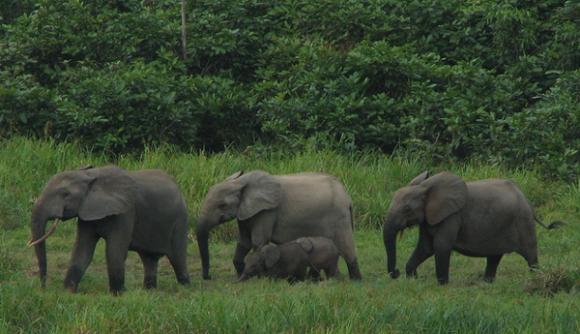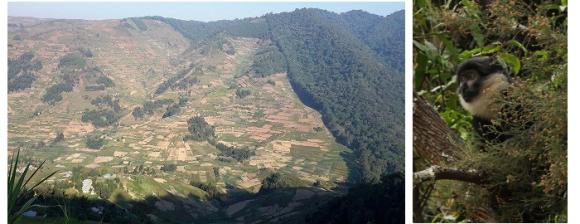Blog Post: Eyes of the World Films, Sustainable World, Episode One


Around the New Year 2012, an old friend asked if I wanted to go to Africa. I immediately said no. Not because I wasn’t interested in Africa, but because I thought our interests would not be aligned. A month and a half later, Eyes of the World Films began on my first date with my future wife. We stayed up all night talking about a theoretical trip where we could combine her enthusiasm for writing and documentary filmmaking with my passion for nature and biology. Both interested in sustainability, we wanted to create environmental films that focused on people addressing conservation in their local communities. We intended to highlight their innovative ideas to other communities and maybe even help bring people together to share strategies.
A year and a half later, we began our honeymoon in Cape Town, South Africa, going on to film in Madagascar, Zimbabwe, Mozambique, Malawi and Uganda where we spent nearly every day during the next six months either filming or riding busses. We contacted a number of interesting projects that were eager to share their time with us to showcase their hard work. Most places we visited had little, if any, media documentation, so we were happy to show the world what they were doing.

Bwindi Impenetrable National Park in Uganda (http://www.bwindiforestnationalpark.com/) was on the top of my list of places to visit. I was curious to see the lush African rainforest, and, specifically, to visit the mountain gorillas. In fact, nearly half of the world’s gorilla population lives in Bwindi (the other half, located at the tri-border parks of Virunga in Congo, Parc National des Volcans in Rwanda, and Mgahinga Gorilla National Park in Uganda).
Much has been documented about the plight of the gorillas. The recent film Virunga describes the challenges in one location of their small range; nevertheless, overall, gorillas are faring quite well despite living on small mountain islands surrounded by, sometimes volatile, densely populated rural areas (up to 300 people per square km living as subsistence farmers).



In the 1970s and 80s, governments worked with scientists to slowly accustom gorillas to the presence of humans for the purpose of tourism. Without this habituation, groups would be very difficult to locate or approach. Today, the growing numbers of these habituated groups have armed guards around them all day long. They are left when they bed for the night, then tracked again in the morning. This ensures that they can be located for visits by tourists, which are allowed an hour supervised experience near the gorillas. The $600-700 tourist fee provides an umbrella of protection for the entire ecosystem of the park, also home to endangered elephants, chimpanzees, and other rare and endemic flora and fauna.

Ruhija is one of several guard stations located inside the park near two of the habituated groups of gorillas. The village of Ruhija, just outside the park, has a variety of tourist accommodations as well as local markets. We chose this area because it is the highest elevation of all the camps, which guaranteed our visit would be at super-lush montane forest.
Always desiring to support community projects, during our time in this area, we stayed at Ruhija Gorilla Friends Camp. After learning of their involvement in the Ruhija community, we could not resist picking up our equipment to share what they were doing.
What impressed us with Ruhija Community Camp was a win-win model of ecotourism. The camp provides affordable accommodations, but, even more importantly, a major portion of their proceeds go to community development, primarily to educating children orphaned by wars in neighboring countries.
Wildlife Living on the Edge

There could not be a finer line between gorilla wilderness habitat and dense human farmland. Only a few years ago, forest existed outside the park, but it has now been cleared right up to the park boundary. With increased community outreach and enforcement, much of the park boundary is now enforced and respected thanks to the revenue of gorilla tourism. Nevertheless, areas of forest are still being encroached upon in more vulnerable areas.

This Google satellite image shows the lush forest surrounded by practically treeless farmland. The few trees outside the park are usually non-native eucalyptus and pines, grown for wood and fuel, or fruit trees for food. Forest animals trapped in this park are as isolated as on an island in the sea. Gorillas persist thanks to the direct intervention of people. The park is large enough to house a breeding population of forest elephants as well as over 300 gorillas but can also be crossed, in one day, on foot.

South of Bwindi, the tri-border parks are home to the other half of the gorilla population. At the beginning of colonial times, the forest was contiguous between the two areas. Now they are two island dots in the African sea of people. On one hand, it is a miracle that these living jewels made it through the wide forest destruction in the second half of the 20th century, thanks to a hand full of passionate conservationists and progressive acts by developing governments. However, growing populations in the surrounding areas have ignited into armed conflicts numerous times in recent history. This has resulted in park resources ravaged for fuel and food and large bits of protected land handed out to landless people once the dust has settled.
Standing on the shore of Island Bwindi, you cannot help but hope that this friendly, yet, struggling human population finds a way to provide a bright future for their children. At the same time, there is nothing like crossing that line to breathe the rich air of diverse life, to hear the wild songs of the world from which we all came, and to navigate into the plush green depths of earth’s dwindling jewels.



Please visit eyesoftheworldfilms.com for more information on our projects:
http://eyesoftheworldfilms.com/eyesoftheworldfilms.com/Home.html
And please like EYES OF THE WORLD FILMS on Facebook:
https://www.facebook.com/pages/Eyes-of-the-World-Films/1513396942280565?...
You can watch the video of Ruhija Gorilla Friends at the following Vimeo link:
It will also be played here on Sustainability Television as Episode One of our New Web Series Sustainable World.
YOU CAN MAKE A TAX DEDUCTIBLE DONATION TO THE SERIES AT THE FOLLOWING LINK:
http://nywift.org/article.aspx?ID=5604

Category:



































Comments
That is a very nice and interesting piece. Looking forward to your future contributions!